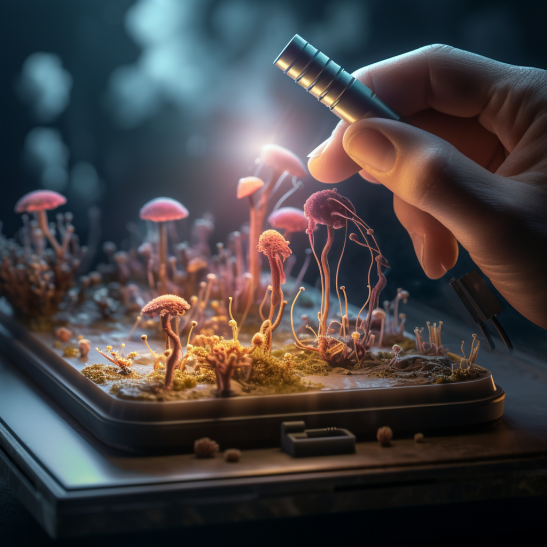In the captivating world of microphotography, proper lighting is the key to revealing the hidden beauty of tiny subjects. This article explores various lighting techniques and strategies to help you achieve the ideal illumination for your microscopic images.
Chapter 1: The Importance of Lighting
1.1 Lighting’s Crucial Role
Discover why lighting is a critical element in microphotography, impacting image quality, clarity, and detail.
1.2 Understanding Microscopic Specimens
Learn how different specimens may require specific lighting approaches to highlight their unique features.
Chapter 2: Types of Microscopic Lighting
2.1 Transmitted Light
Explore the technique of transmitted light, where light passes through the specimen from below, ideal for transparent samples.
2.2 Reflected Light
Discover how reflected light, directed onto the specimen from above, can provide excellent contrast and detail for opaque subjects.
2.3 Darkfield Illumination
Understand the darkfield illumination method, which creates a striking contrast by illuminating the specimen against a dark background.
Chapter 3: Techniques for Optimal Lighting
3.1 Adjusting Intensity
Learn how to control the intensity of light to avoid overexposure and achieve the perfect balance for your microscopic images.
3.2 Angle of Illumination
Explore how changing the angle of illumination can highlight specific features and textures on your subject.
3.3 Polarized Light
Discover the application of polarized light for reducing glare and enhancing contrast in certain specimens.
Chapter 4: Advanced Lighting Setups
4.1 Fiber Optic Illumination
Learn about fiber optic lighting systems and how they offer precise control and versatility in microphotography.
4.2 Ring Light and Annular Illumination
Explore the benefits of ring lights and annular illumination for uniform lighting and shadow reduction.
Chapter 5: Lighting Accessories
5.1 Diffusers and Filters
Discover the use of diffusers and filters to soften light, reduce reflections, and achieve specific lighting effects.
5.2 Light Guides and Fiber Optic Attachments
Learn about light guides and fiber optic attachments that enable precise positioning and control of light sources.
Conclusion
Mastering the art of lighting in microphotography opens up endless possibilities for capturing breathtaking images of microscopic worlds. Whether you’re examining biological specimens, minerals, or intricate structures, understanding various lighting techniques and choosing the right approach can make all the difference. Experiment, refine your skills, and illuminate the extraordinary details hidden within the miniature realm. Happy microphotographing!
